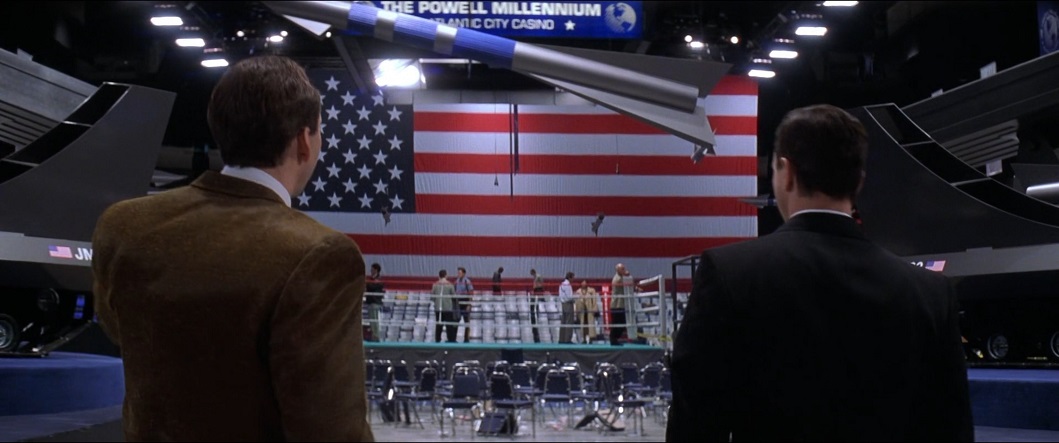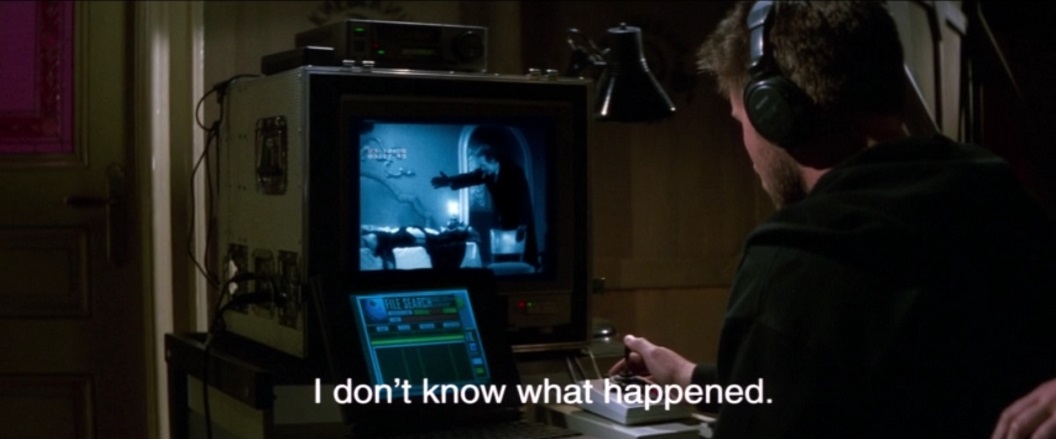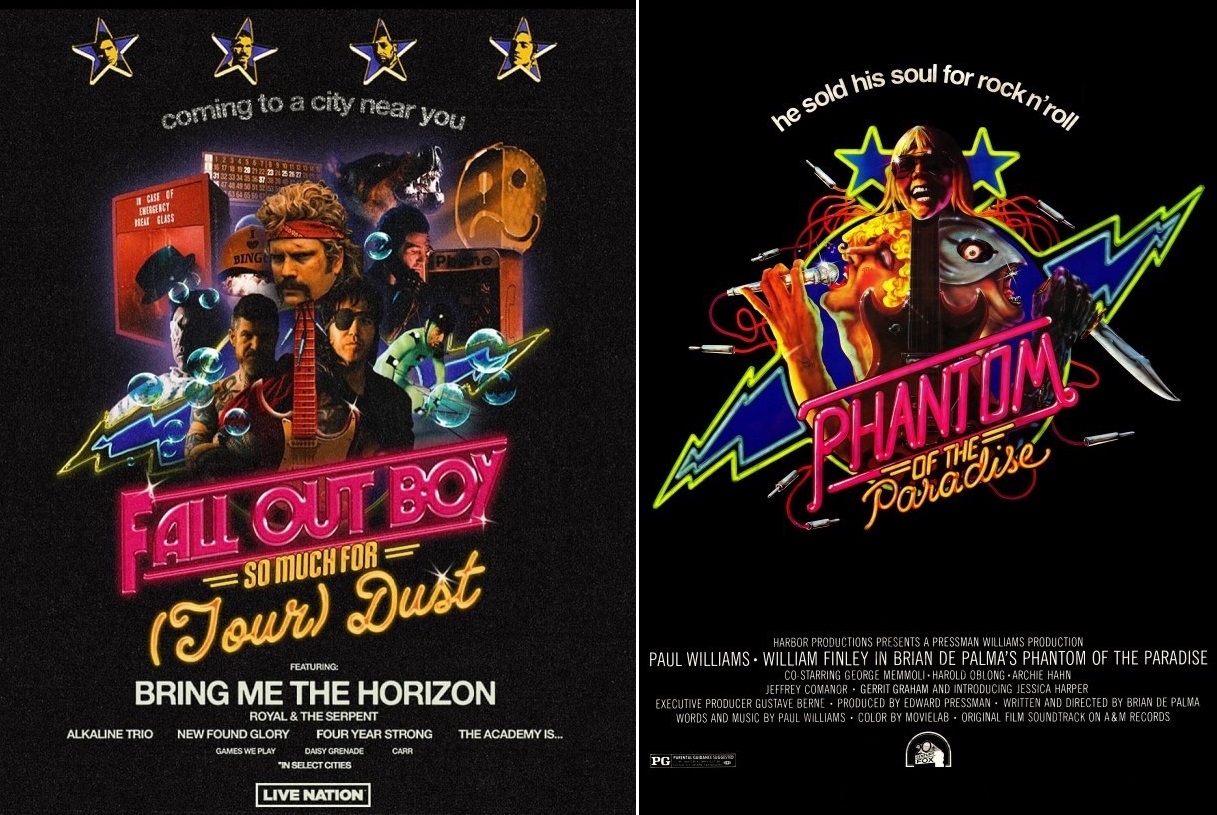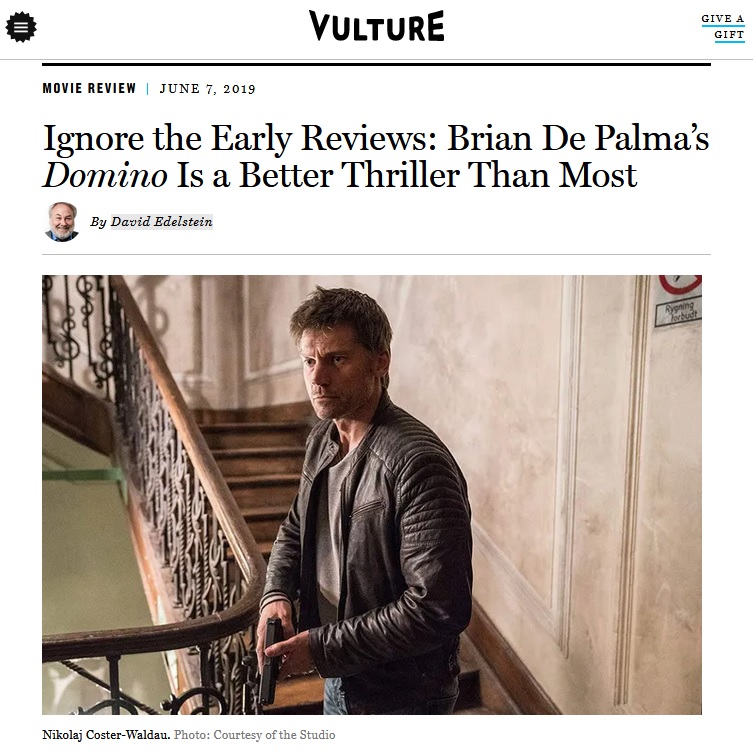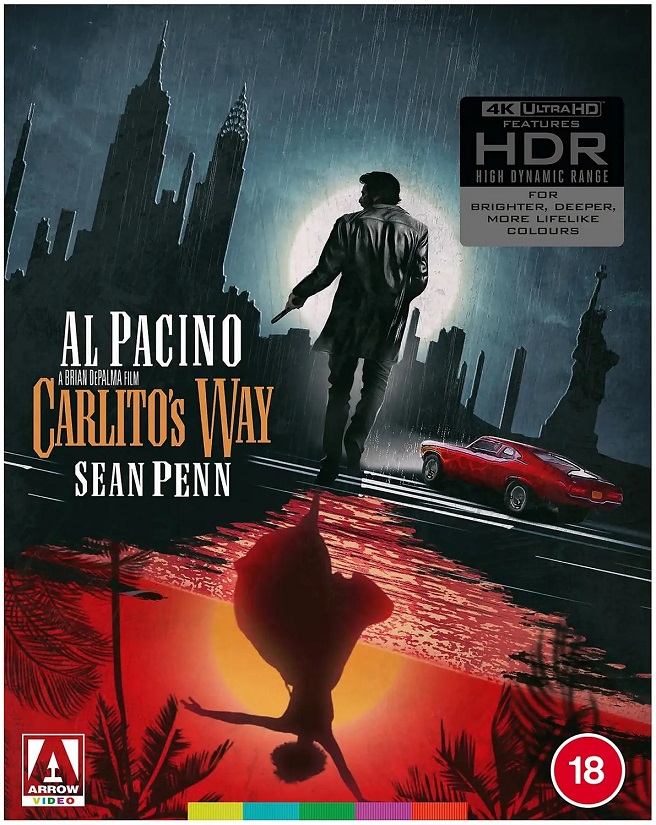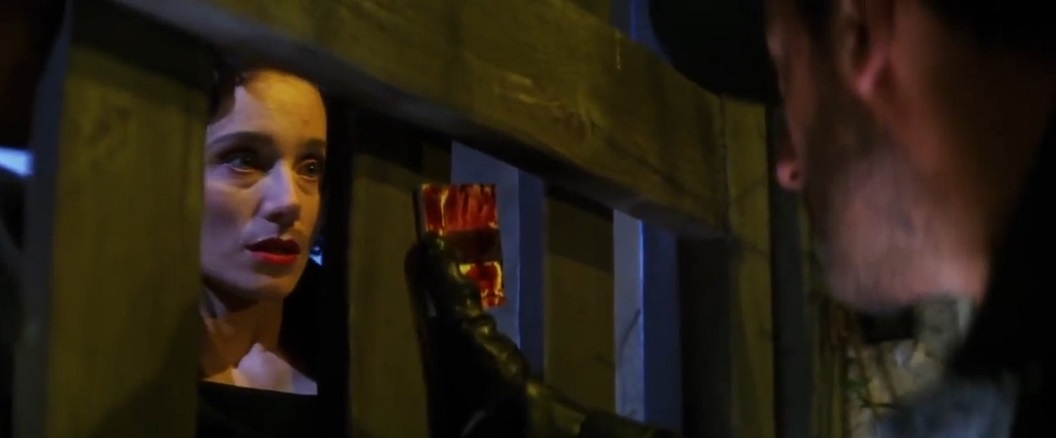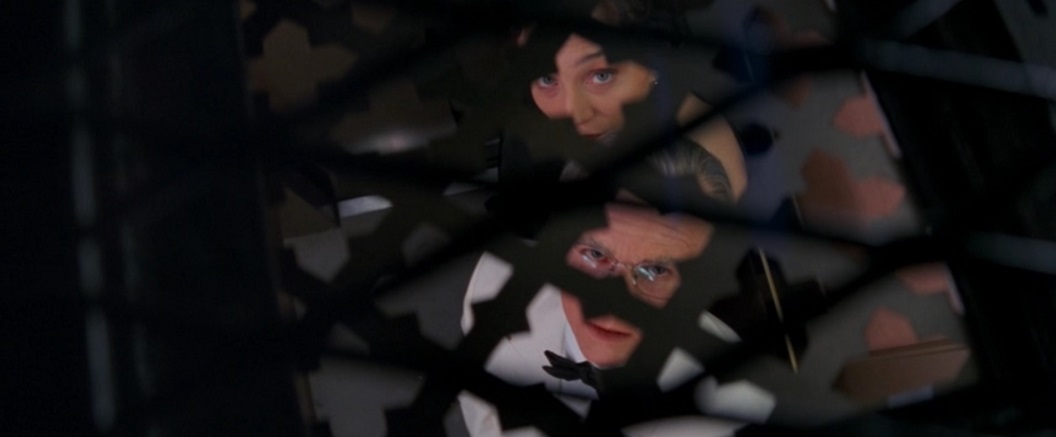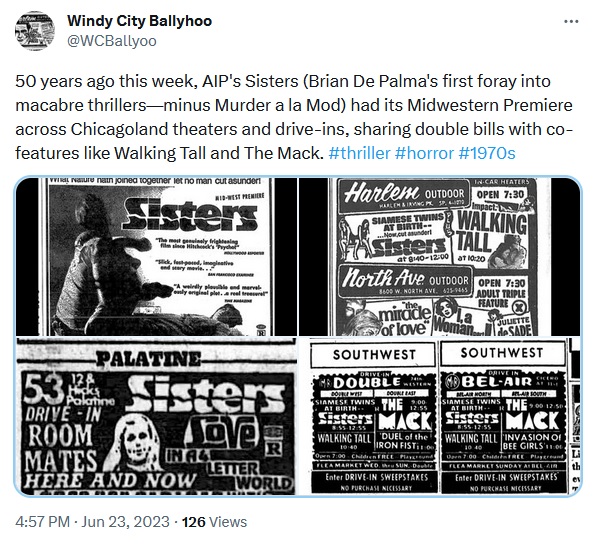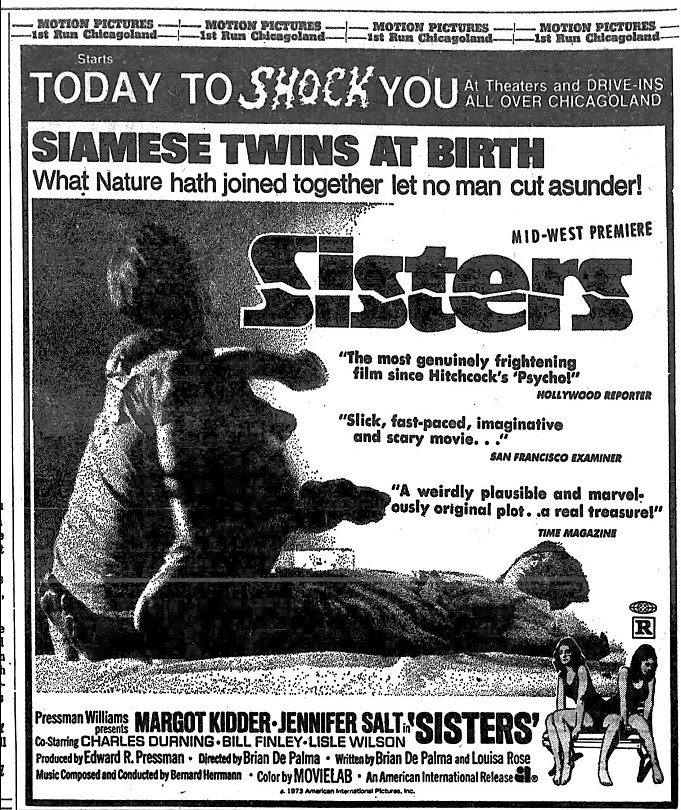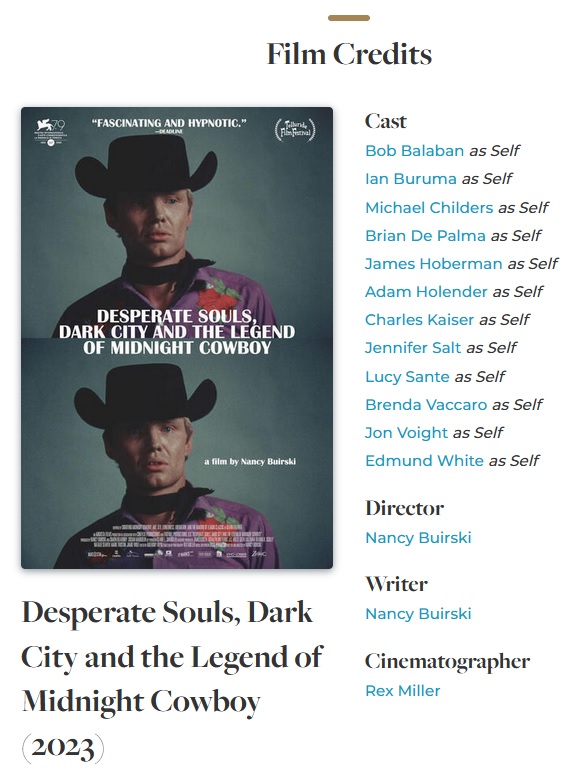"VERY CLEVERLY TIES BACK TO THE 1996 BRIAN DE PALMA ORIGINAL MORE THAN ANY OTHER"
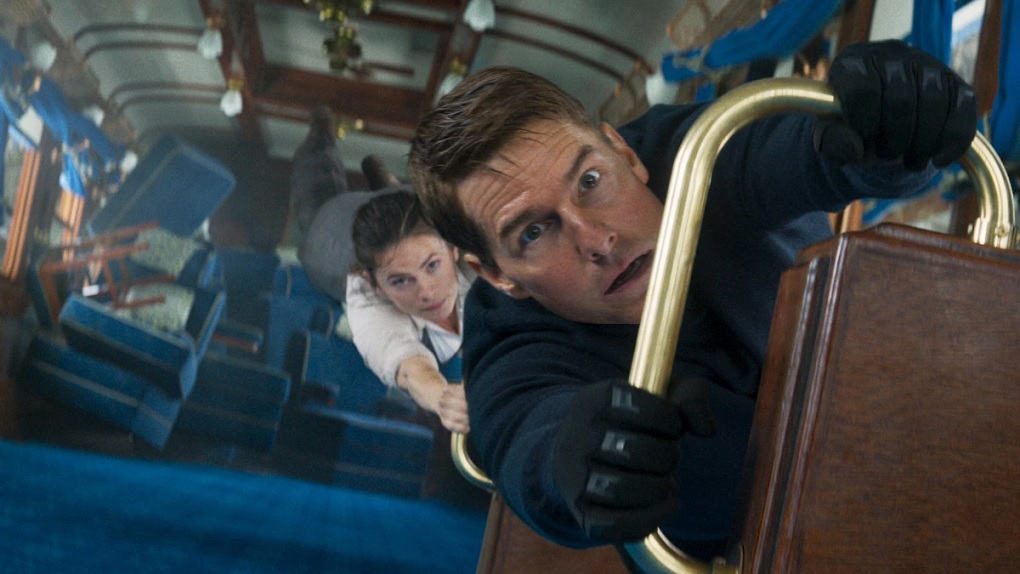
Brian Tallerico, RogerEbert.com:
Last summer, Tom Cruise was given credit for saving the theatrical experience with the widely beloved “Top Gun: Maverick.” One of our last true movie stars returns over a year later as the blockbuster experience seems to be fading with high-budget Hollywood endeavors like "The Flash" and "Indiana Jones and the Dial of Destiny" falling short of expectations. Can he be Hollywood's savior again? I hope so because “Mission: Impossible – Dead Reckoning Part One” is a ridiculously good time. Once again, director Christopher McQuarrie, Cruise, and their team have crafted a deceptively simple thriller, a film that bounces good, bad, and in-between characters off each other for 163 minutes (an admittedly audacious runtime for a film with “Part One” in the title that somehow doesn’t feel long). Some of the overcooked dialogue about the importance of this particular mission gets repetitive, but then McQuarrie and his team will reveal some stunningly conceived action sequence that makes all the spy-speak tolerable. Hollywood is currently questioning the very state of their industry. Leave it to Ethan Hunt to accept the mission.While this series essentially rebooted in its fourth chapter, changing tone and style significantly, this seventh film very cleverly ties back to the 1996 Brian De Palma original more than any other, almost as if it's uniting the two halves of the franchise. It’s not an origin story, but it does have the tenor of something like the excellent “Casino Royale” in how it unpacks the very purpose of a beloved character. “Dead Reckoning Part One” is about Ethan Hunt reconciling how he got to this point in his life, and McQuarrie and co-writer Erik Jendresen narratively recall De Palma’s film repeatedly. And with its sweaty, canted close-ups, Fraser Taggart’s cinematography wants you to remember the first movie—how Ethan Hunt became an agent and the price he’s been paying from the beginning.
David Sims, The Atlantic
Dead Reckoning Part One is another swaggering delight in the series, with director Christopher McQuarrie yet again finding some actual narrative grist in the continued adventures of the world’s silliest superspy. In having Ethan do battle with a ruthless AI dubbed “the Entity,” which wants to control the world’s governments, the film holds him up as an exemplar of humanity—a bold gambit, perhaps, given that Cruise is one of our strangest celebrities, but one the Mission: Impossible movies have been nudging forward for quite a while now. Someone like James Bond might be the best at what he does, but he’s still an extension of the state, and ultimately a ruthless person as a result. Hunt is technically part of America’s intelligence apparatus, but he rejects any notion of “the greater good,” instead stretching reality however he can to save everyone around him and the world at the same time.Surrounding Ethan is his usual gaggle of pals: the tech guys Luther (Ving Rhames) and Benji (Simon Pegg), and the multitalented British spy Ilsa Faust (Rebecca Ferguson). The big additions to the mix are two more femmes fatales, an expert pickpocket named Grace (Hayley Atwell) and an assassin named Paris (Pom Klementieff). And though our villain is nothing more than a glowing sphere that lives in the cloud, it does have a human emissary of sorts, the seething terrorist Gabriel (Esai Morales, sporting a perfectly cropped salt-and-pepper beard). All of them are hunting for a set of special keys that will do … something to the Entity; as is usual for Mission: Impossible, the details are pretty unimportant.
Still, fans of McQuarrie’s high-energy approach in the series’ prior two films might be surprised at the extent to which this entry remembers the other side of spycraft. There’s a lot of double-crossing and murky alliance-making, evoking the twisty espionage of Brian De Palma’s first Mission: Impossible, way back in 1996; to underline it, the nervy character actor Henry Czerny returns as Eugene Kittridge, now the CIA chief, who hasn’t appeared since that 1996 installment. He’s there largely to highlight the ongoing absurdity of Hunt’s “Impossible Mission Force,” the quasi-governmental agency that somehow exists alongside America’s regular intelligence apparatus and recruits agents who are better at close-up magic than they are at hand-to-hand combat.
Though the computerized Entity is the main villain, Kittridge represents an element that’s just as important in these movies: the stuffed shirt who sputters impotently as Ethan and his friends defy all logic on their way to saving the day. Dead Reckoning Part One still has plenty of wild stunts—like Ethan riding a motorcycle off a mountain, and doing martial arts atop the Orient Express—but there’s more than a hint of melancholy in between all the action, and a hint of worry that maybe the good times can’t last forever in the face of all this bureaucratic, algorithmic thought. Given that this is a Part One, the film’s conclusion is inevitably less satisfying than a proper third act, but this is a worthy entry in America’s best ongoing franchise, one where sincerity and absurdity walk hand in hand with vital, triumphant conviction.
David Rooney, The Hollywood Reporter
The movie’s sustained adrenaline charge is both its strength and its shortcoming. Comparing part one of Dead Reckoning with Brian De Palma’s terrific 1996 opener, which upgraded the CIA’s covert Impossible Missions Force from its 1960s television origins to the big screen, is an illuminating insight into how audience expectations have changed in the past 27 years — or perhaps more accurately, how the major studios have reshaped audience expectations.Working with screenwriters David Koepp and Robert Towne, De Palma assembled the nuts and bolts of an admittedly convoluted story with patience and care. He allowed his characters space to breathe while building to stylishly choreographed action sequences that bristled with the director’s customary Hitchcockian flair.
Notable among them was a nail-biting CIA heist operation in which Cruise’s Hunt was lowered into a state-of-the-art Langley security vault to copy a highly prized classified document. It set the tone for a series driven by jaw-dropping stunts, redefining the actor’s career at the same time.
In the almost three decades since that film, Cruise has become a much better actor. It’s hard to take the younger Ethan seriously now when he’s grinning like a cocky schoolboy in exchanges with Vanessa Redgrave’s smooth-as-silk arms dealer, Max — like some high school jock trying to impress the head cheerleader.
His Ethan has become more careworn, jaded, emotionally bruised; he’s acquired the gravitas that comes with loss. And the passionate, hands-on commitment with which the actor approaches each stunt, emphasizing practical execution over effects, has only intensified through the years. No one can accuse Cruise of being a performer who fails to deliver what his audience wants. Which includes running. So much running.
In that sense, Dead Reckoning Part One works like gangbusters. If something has been discarded in the storytelling craft along the way, it’s unlikely that the core fanbase will mind. But McQuarrie, who co-wrote the screenplay with Erik Jendresen (an Emmy winner for Band of Brothers), invests so much in the almost nonstop set-pieces that the connective narrative tissue becomes virtually disposable.
Sometimes it feels as if he’s boiled down the most thrilling elements, not only of the Mission: Impossible series, but of the Bond and Bourne movies, and threaded them into a sizzle reel. There’s less sense here of a story that demanded to be told in two parts — this one running two-and-three-quarter hours — than of McQuarrie and Cruise having a bunch more jaw-dropping stunts they plan to pull off and new travel-porn locations on which to unleash mayhem.
Tapping with uncannily sharp timing into a very now anxiety, the plot revolves around artificial intelligence gone rogue — “the perfect covert operation” — and the suavely sinister terrorist seeking to control it, Gabriel (Esai Morales).
The A.I. development harnesses the power to make everything from people to vessels of war undetectable, to turn allies into enemies, commandeer defense systems and manipulate the world’s finance markets. It has become a monster with a mind of its own that knows everything about everyone and can be controlled only with a cruciform key made of two bejeweled parts lost in the Russian submarine disaster that opens the movie.
As the motivation for a globe-hopping hunt to find the two halves of the key and slot them together to tame the A.I. renegade before Gabriel can get his paws on it, it’s a serviceable plot. But it’s elaborated in numbing scenes lumped in among the fun stuff, with Ethan and his associates trudging through leaden exposition dumps, intoning gravely about “The Entity,” as it’s come to be known. Ominous statements are batted about like, “Whoever controls the Entity controls the truth,” which I guess is tangible enough as a threat to world order.
But when we get to see the digital mega-brain at work, looking like a giant fibrous, pulsating cyber sphincter, the whole thing becomes a bit silly. And if after the first half-hour or so you’re still following the plotting intricacies of how the parts of the key got to wherever they are, whether they’re real or fake, who has them and how the IMF crew plans to get them back, congratulations.
Coming after the series high of 2018’s Fallout, in which McQuarrie found an ideal balance of story, character and turbocharged spectacle, this aspect of the film, it must be acknowledged, is disappointing. If De Palma’s Mission: Impossible was considered overly complicated, the storyline here is an absolute maze. But then, as soon as Ethan starts going at it with a pair of trained assassins in a tight Venetian vicoletto, or any number of other bravura sequences in beautiful locations, you’re unlikely to care much about all that Entity blather.
Siddhant Adlakha, IGN
Until the previous entry in the franchise, Mission: Impossible – Fallout (the one with Henry Cavill reloading his forearms), these movies largely stood alone, but Dead Reckoning Part One reaches into the past on numerous fronts. The return of the first movie’s morally dubious intelligence head, Eugene Kittridge (Henry Czerny), serves less as a wistful cameo and more as a throwback to the series’ neo-noir roots – a welcome antidote to a summer overrun with empty nostalgia à la The Flash and the new Indiana Jones. Ethan Hunt’s (Cruise) need to go rogue in Dead Reckoning is a direct result of characters and events of the original, Brian De Palma-directed Mission: Impossible, leading to a scenario where Hunt’s own government can’t be trusted with the movie’s dangerous McGuffin: an all-powerful, artificially intelligent algorithm dubbed “the Entity.”
Jonathan Sim, ComingSoon.net
Each one of McQuarrie’s movies has felt distinct from each other. With this movie, it seems as if he is putting his spin on the feel of Brian de Palma’s original Mission: Impossible movie from 1996. There is a lot of that tension, especially from the original film’s opening act, where the characters are racing to keep up with the looming terror around them. The film even brings back Ethan’s sleight-of-hand magic, Henry Czerny as Kittridge, and a finale action sequence set on a train. McQuarrie takes everything great about that original film and combines it with the flair that he has consistently brought to this series.
Richard Lawson, Vanity Fair
It takes a while to get into the groove of Dead Reckoning, which trades the gliding high gloss of Fallout for something grainier, stranger, more comedic. Its harsh camera angles evoke Brian De Palma’s 1996 Mission: Impossible film, no doubt a direct allusion. There’s even a climactic train sequence in Dead Reckoning, just as there was 27 years ago. McQuarrie seems done aping (and, occasionally, upping) Christopher Nolan and is returning to the M:I franchise’s roots. Understandable, given that we are, allegedly, approaching the end of its run.Cruise shows little signs of slowing, even if his timing is off as he uncharacteristically struggles to get Dead Reckoning’s gears turning. But the stakes of the film make it feel as if finality is in the offing: a sentient AI is threatening the entire world, while human-led nations (and a couple of criminal enterprises) do a mad scramble to get it under their control. Cruise’s Ethan Hunt, either super spy or demigod, finds himself at the center of this narrative, largely for personal reasons. The memory of a lost love comes whispering out of the past while a contemporary, quasi-romantic relation is tossed into new peril. The macro and the micro are at risk from a holistic threat, one that will define the core mission of Ethan’s life.
Which, arguably, was also true of Fallout, but Dead Reckoning works hard to sell its even-bigger-ness. The AI stuff is too magical sci-fi for my taste—AI is a creeping menace, surely, but this foe plays too B-movie (think, Transcendence) and too all-powerful (think any superhero movie) for the relatively sophisticated Mission: Impossible films. It’s difficult to take things seriously, then, as McQuarrie (who wrote the script with Eric Jendresen) throws a heap of exposition at us while also trying to keep things light. (There’s a Roman street chase involving a tiny yellow Fiat, for example.) The balance is off, which even Cruise’s agility can’t correct.
An hour or so in, though, the film finds its footing, somewhere around the time that Ethan and his coterie of helpers (including new player Hayley Atwell, as a master thief in way over her head) arrive in Venice. There the film’s De Palmian moodiness is put to good use, in an arresting and somber sequence set in the impossibly narrow streets of the world’s most picturesque city. That then leads our hero to the stunt to end all stunts, one already shown almost in its entirety in promotional videos released months ago. It’s a shame that this jaw-dropping act—in which Tom Cruise pilots a motorcycle off a cliff and then does a sort of mid-air, Alpine BASE jump—has been spoiled. Technically impressive as it is, it’s been sapped of surprise.
But the subsequent train set piece is a satisfying stunner, unrelenting and convincing even in its dubious physics. I suppose it’s fitting enough that a Part One should really only get up to speed when it’s nearly over; that steadily built momentum is meant to rocket us into the finale, which will be released next year.
Hoai-Tran Bui, Inverse
The first half of a two-part story, Dead Reckoning Part One is an exhilarating blockbuster, distilling pure spectacle into a two-and-a-half hour feature. It’s also the first time Mission: Impossible is deep in conversation with itself. McQuarrie departs from his action-first style to pay homage to Brian De Palma’s first Mission: Impossible — all intense close-ups, canted angles, and heightened, pulpy paranoia. This creates a sense of full-circle continuity the Mission: Impossible films rarely have, but it also feels like McQuarrie is playing in another director’s sand box when he should be doing what he does best: delivering Tom Cruise’s latest death-defying stunt in the most breathtaking, jaw-dropping way possible. It’s in those moments that Dead Reckoning Part One transcends anything any other action tentpole can even dream of touching.




